Watch for the eye.
He turned, the suns last rays lighting antler tips.
The arrow entered mid-rib and drove forward.
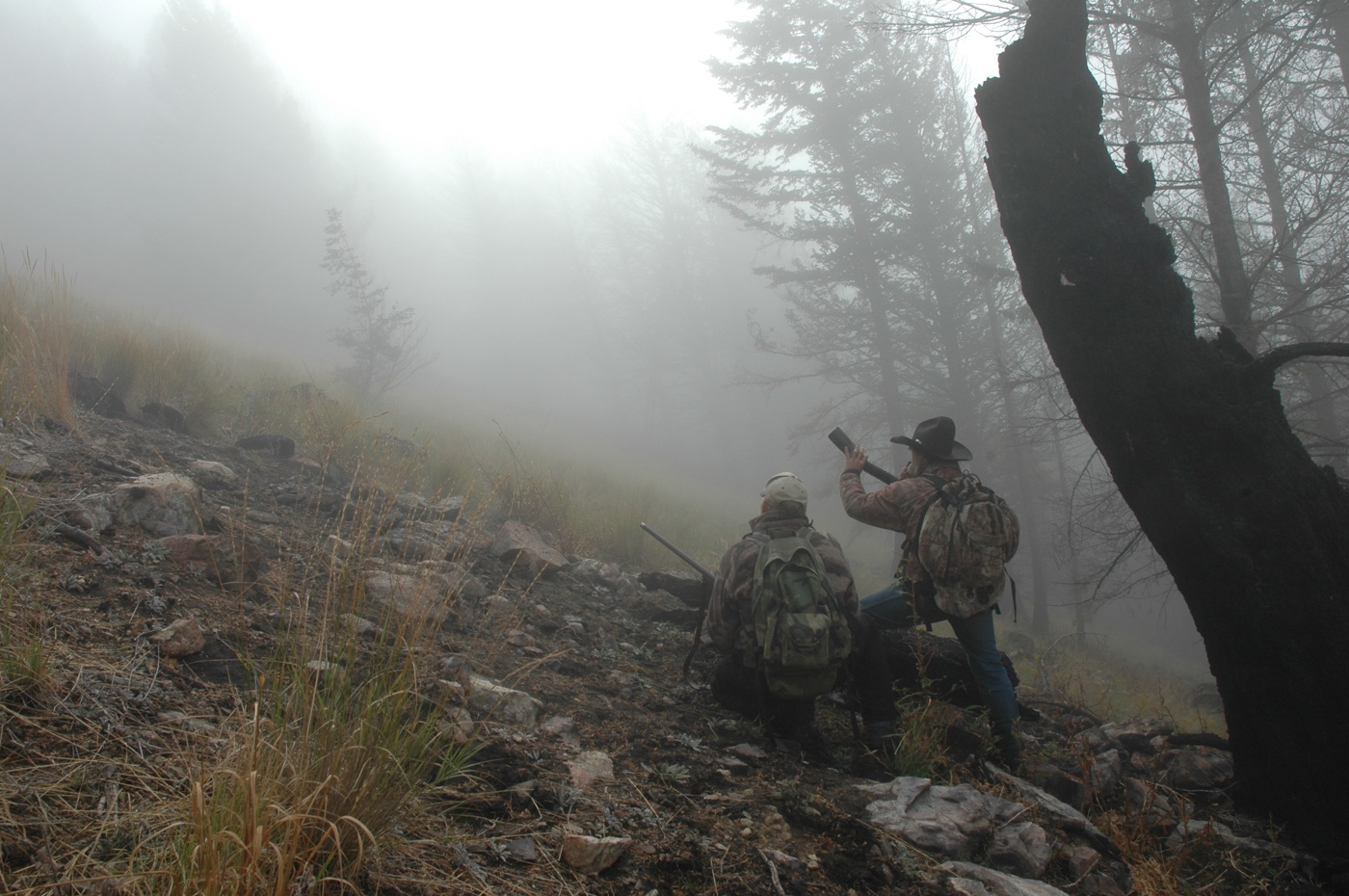
September’s rut is “bugling season.” Bull elk have learned hunters bugle, too, and can be hard to call in.
He dashed a stones toss into the timber and slid on his nose.
A hunt for September elk can give you more than you deserve.
October evens the score.
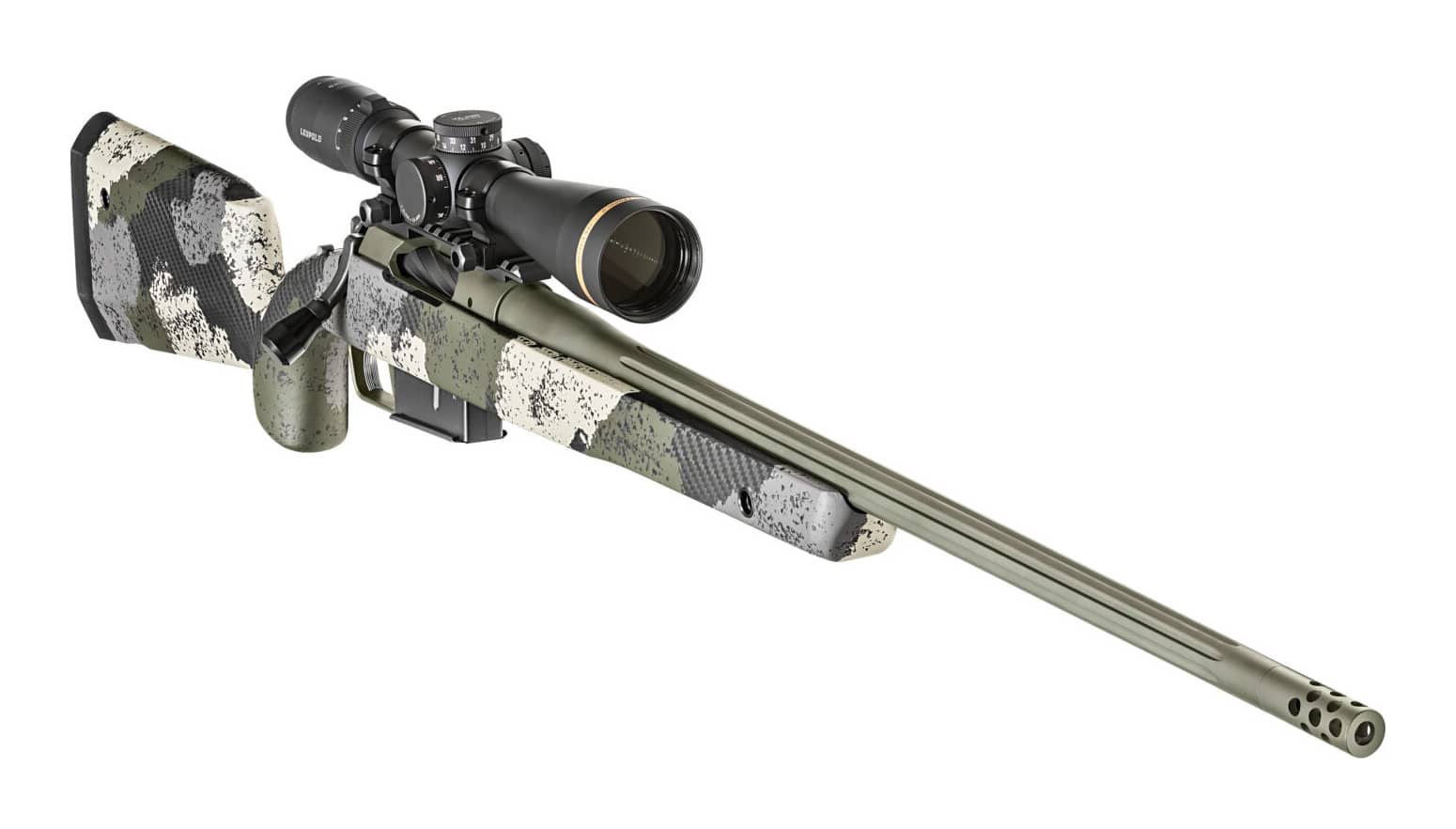
Elk rifles, like this Springfield Armory Waypoint, can take many forms. The Model 2020 Waypoint offers a lot of features at a reasonable price for a high-end hunting rifle.
Bulls dont bugle; they bed where noisy forest litter can sound an alarm.
A post-rut bull frequents empty places.
Empty is on his radar; he senses when a hunter intrudes.
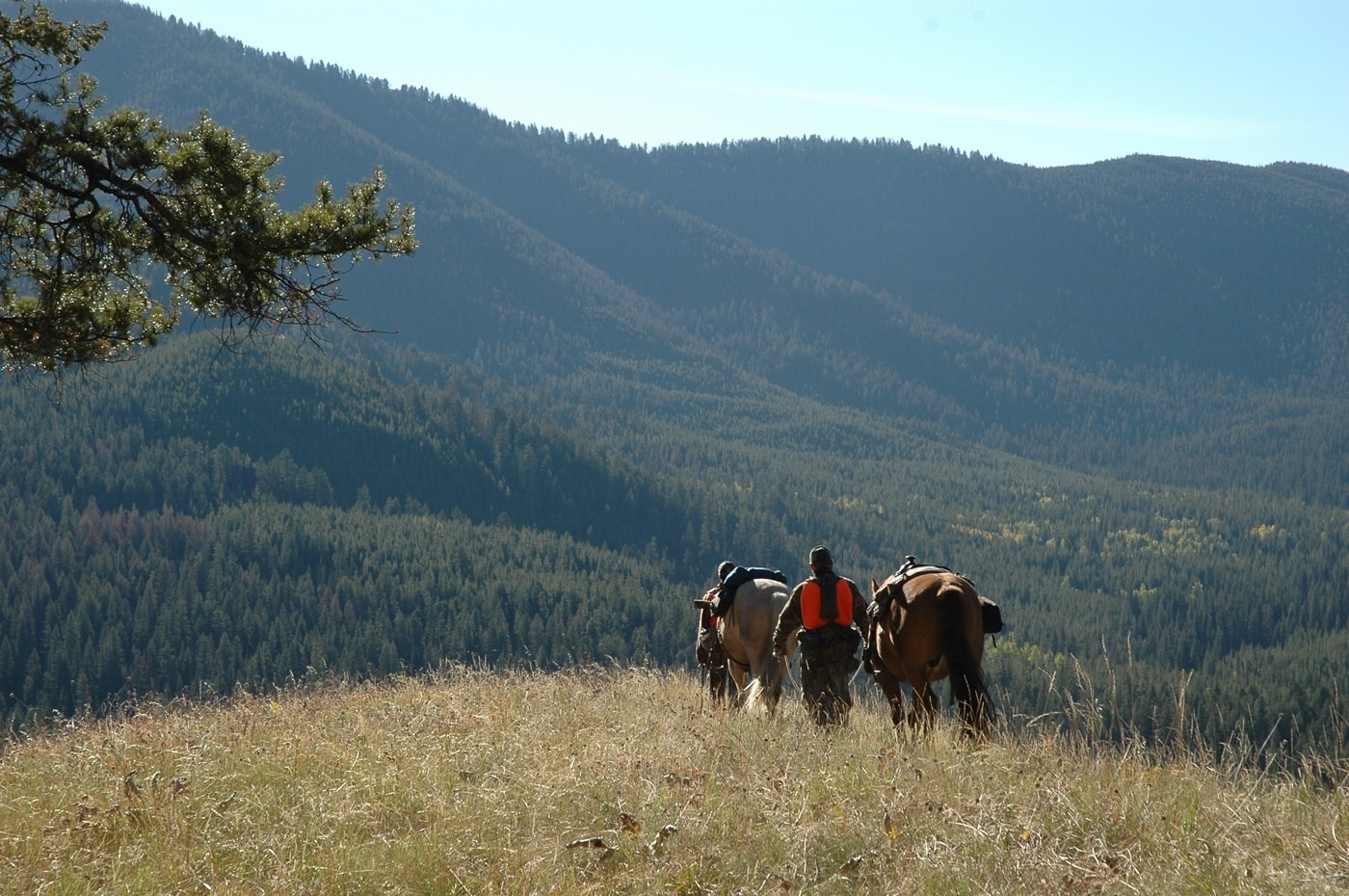
October elk bulls rest in timber. Here, in Montana’s Bob Marshall Wilderness, there’s lots of it to search.
Early snows can improve hunting, but only the most severe prompt migration.
Elk move to mid-elevation thickets mainly to dodge hunter traffic from high basins and roads-end camps.
A month later, prolonged cold and shrinking daylight signal that high places will soon be uninhabitable.
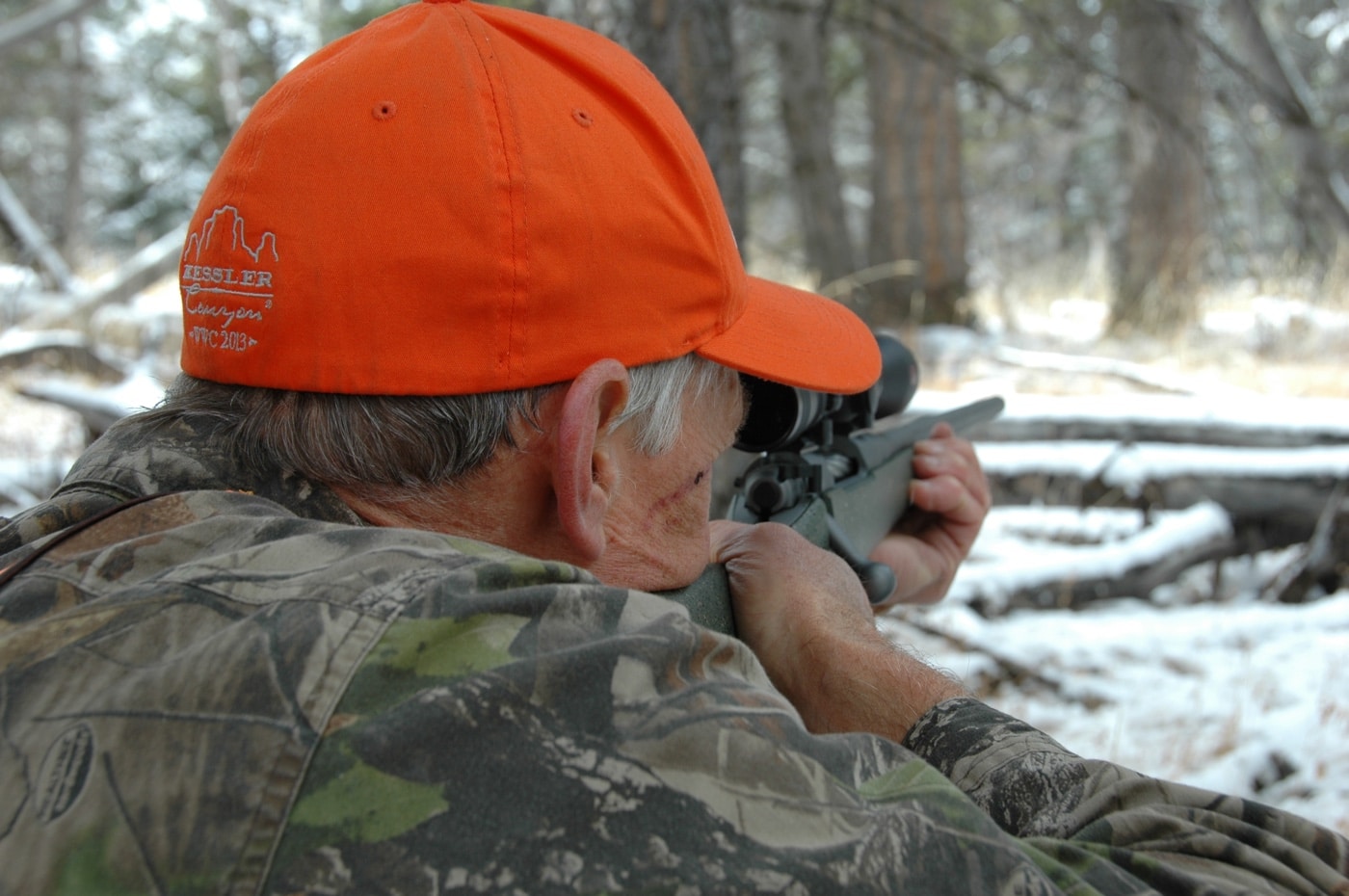
While many hunters frequent open places for the view, Wayne prefers to go where elk live: in timber.
Elk move down-country, often abruptly in numbers.
Its a myth that old bulls stay high.
Pack animals extend hunting radius and the distance it’s possible for you to bring elk out.
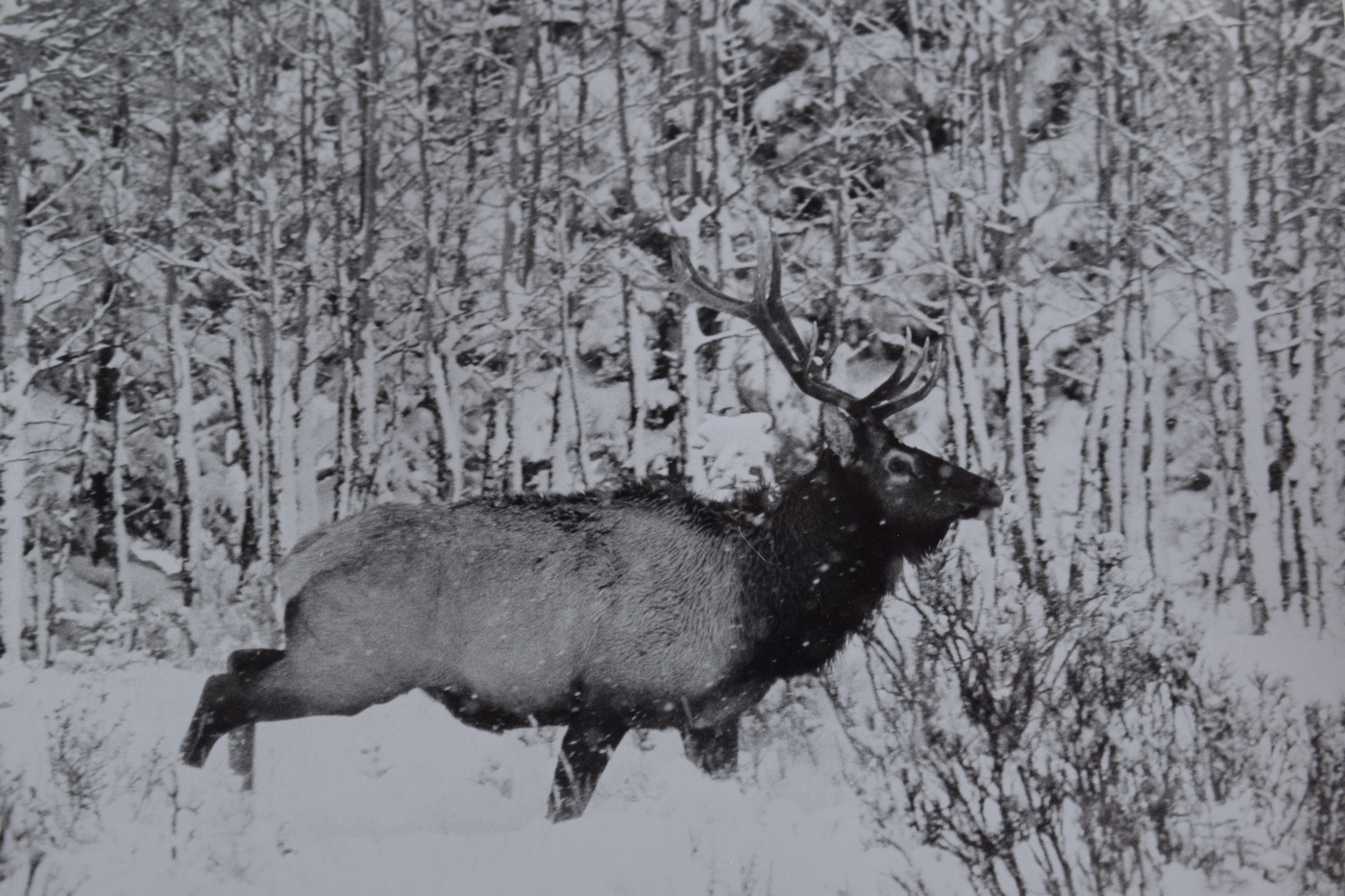
Early snows seldom trigger migration. But a November storm in the Rockies almost surely moves elk.
Caveats for beginners apply to frustrated veterans.
Elk are herd animals that can range widely and unpredictably.
Westwide, as few as one in seven elk hunters, kills anelk.
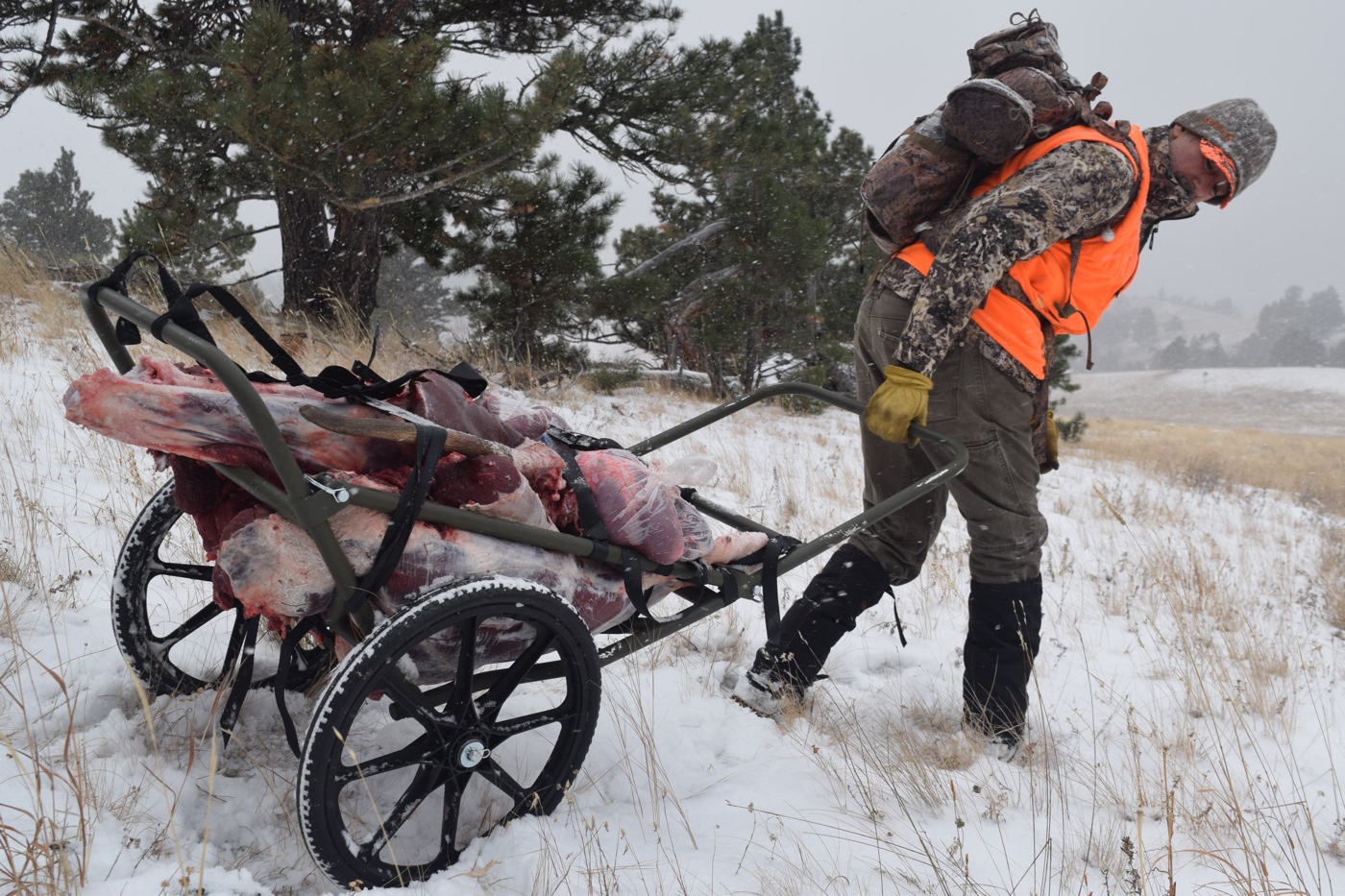
DIY hunts beg thorough planning. How will you bring elk out? This cart holds the meat of a spike bull.
A mature six-point is a rare prize.
Like mule deer, elk in the mountains often bed in timber a short rifle-shot below a ridgeline exit.
But most hunters prefer open places where they can see far.

An outfitted hunt can’t guarantee you an elk, but packing into the back-country is a wonderful adventure!
They post on meadow edges and bald spines.
Elk learn these are perilous places.
Avoiding hunters, elk may move miles, to return days later.
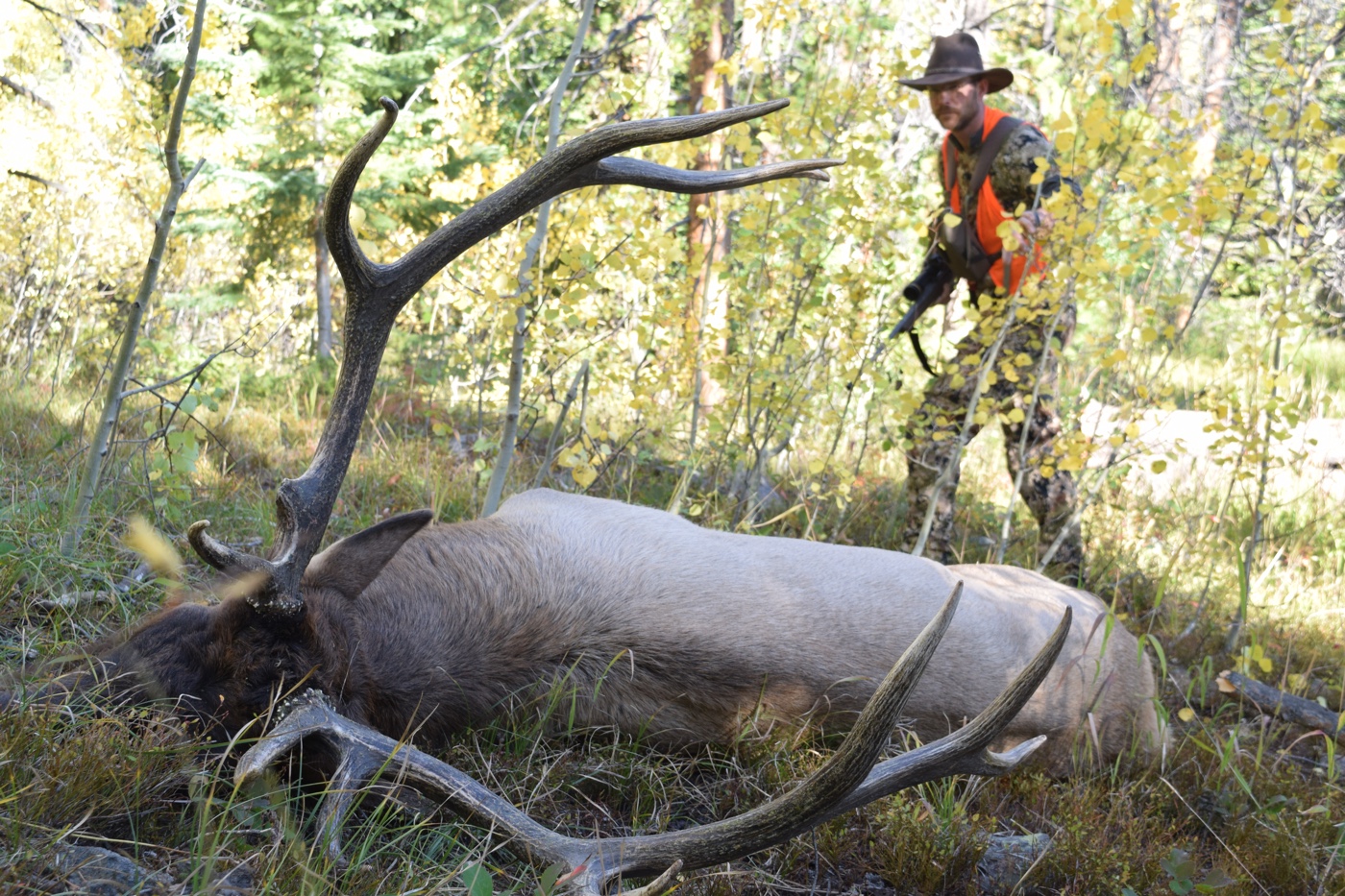
Rut drew three Colorado bulls into a brawl. This hunter got within 40 yards for his shot at the biggest.
At days end years ago, I was glassing for elk across a small meadow.
Turning, I almost jumped out of my skin.
A bull was staring from timbers edge 70 steps away.

Minutes later, I was field-dressing my first six-point.
Hot weather had drawn this elk to water.
Neither of us expected to see the other.
The best elk country has plenty of water.
Elk have heavy coats and thick hides.
In some countries, they burn more calories keeping cool in summer than warm in winter.
In early fall, checking wallows can pay off.
But like meadows pocked by elk beds, many freshly muddied seeps are from night visits.
Elk Hunting: Sticking With It
Perseverance helps you find elk, salvaging victory from despair.
I forced myself out of the cabin and climbed through crusted snow into the bitter blow.
At first light, I glanced across a logging wed prowled repeatedly.
A chalky form moved.
The bull fell to my .300.
Elk are big animals; they need lots of food.
Their broad muzzles evolved to do that.
Sometimes youre smart to be still.
Early one afternoon, elk sounds on a Montana slope drew my attention.
Slinged up in a sit, I waited.
Minutes later, a twig snapped.
A cow ghosted across an opening.
The trailing bull didnt pause either.
But my reticle rode the leading edge of his shoulder as I pressed the trigger.
He ran a few yards and piled up.
Elk like these cruel places because hunters dont.
Noisy, difficult cover warns bedded elk of the few who might probe it.
While canyon floors can be difficult too, elk seldom bed there, as daytime thermal drift is uphill.
Also, escape routes from the bottom are few.
Any climb from a gut is slow, arduous and exposed to the slope opposite.
Once, after a tiring day in Oregons Wallowa Mountains, I descended in thickets Id passed that morning.
An elk herd erupted and thundered down-slope.
I ran ahead, saw only rumps.
Then, to my right, a wink of antler!
My rifle took one of three bulls that had held tight as the cows crashed away.
A whitetail tactic that may also have worked for them earlier that day!
On the Chase
Tracking elk in snow is much like tracking deer.
Of course, elk can leave you farther behind.
But good tracking conditions arent to be wasted.
Ive followed elk that knew I was trailing them.
One ran off in a small group after I muffed a chance.
The snow was noisy; the bull had all day and all of Montana to lose me.
But I persevered, well to the side to stay hidden.
The track led to a meadow.
As elk often pause to look back across an opening, I glassed from cover before leaving it.
A spot of color in the pines beyond caught my eye.
My offhand shot dropped the bull.
Sprinting after elk youve surprised in cover can bring you a shot, as their racket drowns yours.
If an elk stops, itll be where theres no threatfromwhere you were.
OK; in some places, even a short chase is laughable.
But when the elk is crashing off, what have you to lose?
Once, a bull rocketed downhill off a timbered spur.
I raced after it, leaping logs, dodging staubs, barely staying on my feet.
I paused, out of breath, when a trail appeared below.
The bull could have sped through that slot.
Instead, he pulled up there to look back.
A bullet from my 6.5 pierced his ribs.
Ailing, he stumbled down through the trees.
A second shot broke his neck.
Flashlight beams lanced the dark as we saddled up in cold drizzle.
Hooves sucked mud; limbs slapped my ears.
The Bob Marshall Wilderness was hours from waking.
It relented miles on, as gray light seeped from a sullen ceiling.
We swung stiffly from our horses.
At noon we nursed a fire in sticky snow.
At dark, we rode back to camp.
Wed neither seen nor heard an elk.
That night, frost stiffened the grass.
Before dawn, we tucked into hotcakes, snugged cinches and eased onto icy saddles.
We rode farther, hiked higher and probed thicker places.
Near dusk, we climbed a steep face and tied our lathered geldings below the last trees.
To our astonishment, it drew a wavering response, far away.
The response was instant, and louder.
We struggled up toward a rim of brush, lead in our legs.
A shrill bray, now close.
I fired into his chest.
He spun, lunged across my front and stopped in a thicket.
A patch of rib appeared.
I triggered the rifle, cycled and fired again as he fought the inevitable.
In 50 years of hunting, that is the only elk Ive shot that was coaxed in.
Beckoning elk with bugle or cow call has become so popular, elk are wise to the ploy.
Bulls that answer may also nose their harems in the opposite direction!
Bulls that approach often circle downwind.
I dont use a call anymore.
Conclusion
With or without vocal duels, a guided back-country elk hunt ages well in memory.
No legitimate outfitter can promise a kill, let alone the wide, truck-axle antlers elk hunters dream of.
Such places in the company of people with the common purpose of shooting a wild elk beggars description.
Go to forum thread




